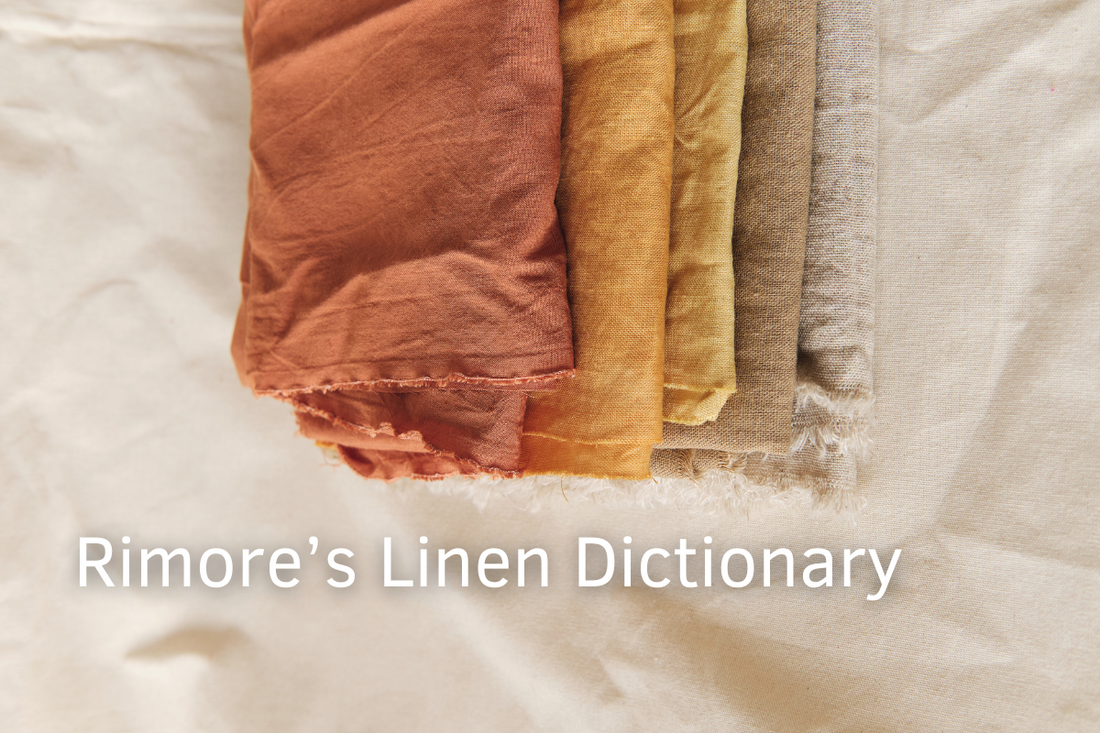
The Linen Dictionary: Unravelling the Fabric of Luxury with Rimore!
Share
Ever wondered what makes linen the top choice for those who prefer their clothes to be sustainable, comfortable and elegant? The present world is adapting fast fashion quickly. However, even in such an environment, linen stands as a timeless symbol of sophistication. Linen is a natural fabric. But there is much more to understand about this fabric. It involves a complex tapestry of terms and techniques that lead to fibres from a plant being created in the luxurious linen fabric.
Whether you are a fashion enthusiast or simply looking forward to transforming your wardrobe with the most comfortable clothing, you must learn about linen in detail. Understanding the various terms and techniques related to the fabric will allow you to know why this fabric is just perfect for you.
Rimore wishes for much more than just being another clothing brand. We wish to offer each one of our customers with experiences woven into every thread. Each thread of our linen clothing has a story to tell. Let’s take a journey through the world of linen and understand all the terms related to it to know more about this exquisite fabric and its stories.
From Flax to Fabric: The Basics of Linen
Before we dive into the more complex and diverse terms related to linen, let’s start with the three most basic ones.
Linen
Linen is a natural fibre made from the stalk of the flax plant. Renowned for its durability, natural lustre and breathability, this fibre is used for a variety of purposes ranging from clothing to bed linens. The unique texture and softness of linen makes it a top choice for fashion and comfort.
Flax
Flax is the plant from which linen is made. This plant has been cultivated for thousands of years. Its stalk provides fibres of linen that are known for their versatility and strength. Fibres from the flax plant’s stalk are turned into linen by following various steps. These steps include retting, breaking and scutching. All these steps help separate the usable fibres from the plant.
Retting
Retting is a crucial step in the production of linen fabrics. It involves soaking the flax stalks into water. This helps loosen the fibres from the woody stems. Retting takes several weeks and is essential for high-quality production of linen.
Lea
Another essential term to understand in the Linen glossary is Lea. It is a unit of measurement that describes the fineness of linen yarn. The Lea count is the measurement of how many yards of yarn weighs one pound. The better the Lea count, the finer is the Linen yarn. Higher Lea count means the Linen fabric will have a more refined texture.
GSM (Grams per Square Metre)
GSM refers to the fabric’s weight. For example, we use 250 GSM Linen fabric that has medium to heavy weight. Also, it is highly durable for varying purposes.
The Linen Lingo
Below are some more related terms to Linen that you must understand.
Capsule Wardrobe
A capsule wardrobe is not an exclusive term for Linen. However, if you are aiming to build a capsule wardrobe, Linen clothes will be the top choice to be included. The concept of this wardrobe revolves around curating a collection of timeless and premium quality clothing pieces. Linen is a top choice for such wardrobes due to its versatility and durability. As this fabric allows you to meet your fashion needs without stuffing too many pieces yet staying stylish.
Hypoallergenic
Linen fabric has hypoallergenic properties. These properties are a result from the natural components found in flax like ferulic acid and sterols that makes linen resistant to fungi and bacteria. This is why linen is also suitable for people with sensitive skin. These properties make linen a pleasure to wear.
Biodegradable
Linen is a 100% biodegradable fabric as it breaks down completely without leaving harmful residues behind. The eco-friendliness of this fabric is a crucial reason behind making linen a sustainable choice in a world rapidly following fast fashion. This is why wearing linen gives you a peace of mind that your style choices are kind to the planet.
Texture
Linen is renowned for its unique texture. It has a slightly crisp yet incredibly soft texture. The fabric also has a natural lustre. This texture of linen is seen only when it gets crafted carefully with the right Lea count and perfect GSM. Careful craftsmanship can lead to linen that promises a texture that enhances the overall aesthetic of the garment.
Summing Up
The glory of Linen can never be described in a few words. However, there are specific terms that ideally introduce you to this fabric and help you understand why it is so beneficial to wear linen clothes. To know more about this luxurious fabric, stay connected with Rimore. Also, explore our collection today to build a comfortable yet stylish and eco-friendly wardrobe.
